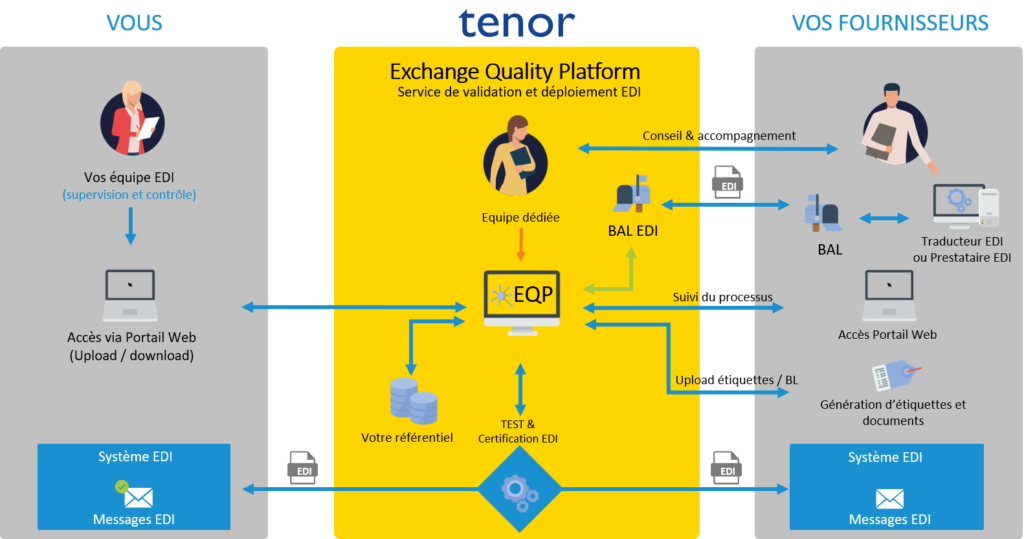Supplier EDI Onboarding
26 June 2023
26 June 2023

Supplier EDI deployment is the best way to improve the supply chain with few (less than 10) or many (more than 10) suppliers. This will depend on your ability to “onboard” them internally. Integrating your suppliers into an EDI and/or WebEDI validation process enables you to quickly and easily upload your EDI exchanges (orders, shipping notices, invoices, etc.).
In fact, it brings visibility and fluidity to the exchange of goods and information between you and your suppliers. The principle is to qualify and deploy suppliers using EDI or WebEDI, and to keep control of the entire EDI supplier deployment process.
This list is imported into a qualification and approval portal. The aim is to check with suppliers that they are EDI-capable, or WebEDI-capable if they are not. It is also at this stage that the various contacts are qualified.
The customer’s logistics scenarios are integrated into the platform. Your suppliers are then tested to ensure their ability to meet your requirements. This is known as supplier certification. In fact, you can visualize your suppliers’ progress through the validation process (making contact → running the first tests → …).
This allows you to validate your suppliers’ EDI or WebEDI capabilities. This is the most important and longest stage in supplier EDI deployments.

Once the system has been approved, the client can then start using production flows with its suppliers. Your EDI service provider’s teams are responsible for ongoing monitoring and supervision. They ensure that all services (telecoms, translation, etc.) are running smoothly.
EDI partners often submit your new suppliers for approval by simple e-mail request. This enables them to be rapidly integrated into your supply chain flow.
In conclusion, the EDI service provider takes care of the centralization of exchanges from A to Z. In fact, it monitors the deployment of EDI and/or WEbEDI by suppliers. All the client has to do is supervise the supplier’s EDI deployment.
Tenor has been helping you with your Supplier EDI Onboarding for over 30 years. Contact our services and launch your project today.